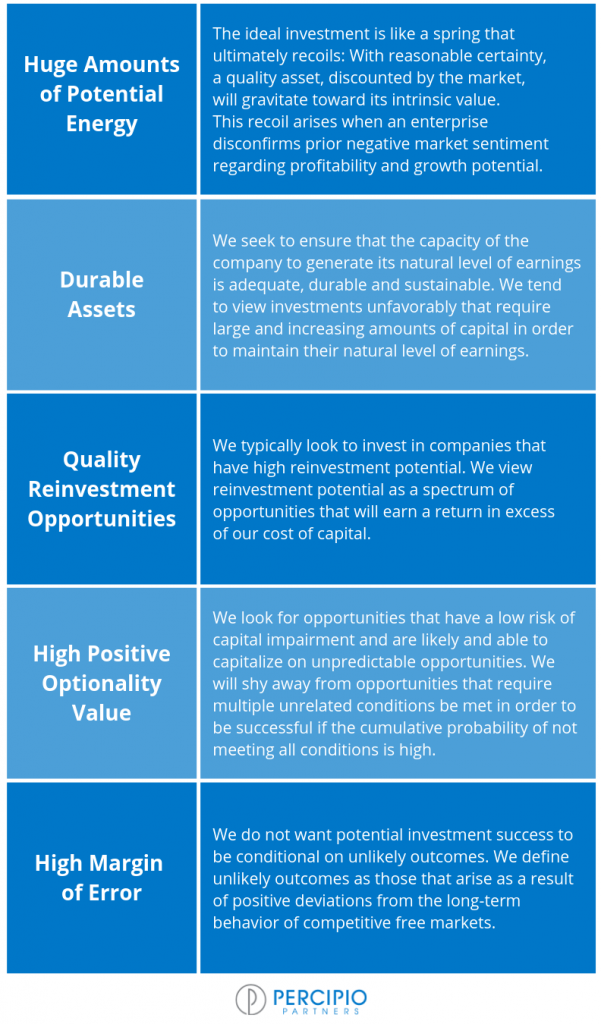
As a member of our firm’s investment committee, I’ve fielded a number of inquires about our approach to investing. I thought it would be good to share my view of what separates Percipio from other firms.
Our success is directly borne out of the way we make decisions; we don’t base investment decisions on heuristics. For any opportunity we evaluate, we create a pro forma, conduct a cash flow analysis and try to understand the competitive landscape. Performing this due diligence takes time and a critical eye, but it allows us to quantify the value of the opportunity and identify potential risks. This process might seem rigorous, but it alone doesn’t ensure that we will create more value than the average investor. That’s because it’s the status quo — most private equity and venture capital firms do the same thing. All it does is ensure we don’t make stupid decisions. So how then do we ensure that we can create more value than an investor’s opportunity cost?
What differentiates Percipio’s process from other firms is that we don’t end our evaluation process once we’ve performed due diligence. After we’ve completed our baseline evaluation, we go deeper by critically evaluating the investment against our strict value-oriented underwriting criteria; we then make our investment decision based on those standards. The table below summarizes some of the criteria we use for evaluating operating company investments. Although we generally view these measures as conjunctive, the relative value of each varies from investment to investment.

When a prospective opportunity is in real estate, it requires a similar level of due diligence. However, because this asset class requires us to also wear a developer hat, the analysis is much more iterative. We have accumulated a significant amount of micro-level data related to renter income, amenity preferences, rental rates by property class and occupancy rates in the Omaha metro area. Drawing on our investment experience, research and data analytics, we also have more insight than most into the cost drivers for single family and multifamily operating expenses, as well as the cost and risk of rehabilitation. Using this data, we can effectively evaluate which combination of location, amenities and finishes will yield an optimal investment.
I think what sets our real estate investment decision-making process apart is our ability to recognize that prices are recursive and then only make investment decisions based on our expectation of future prices rather than current prices. As we have seen recently in Omaha, many independent investment decisions were made based on the same pricing signals, without consideration for how these collective actions would impact prices. As a result, a glut of new real estate has entered the rental supply, which has put significant downward pressure on rents and occupancy rates. Very few investments were underwritten with these lower rents and higher vacancy rates, but projects’ stakeholders are now forced to live with the consequences of this collective decision to build. By keeping our own cost basis down through shrewd, value-driven investing, we’ve ensured we have enough margin built in to our investments to weather oversupply conditions in the market.
Regardless of industry or asset class, Percipio’s core approach to investing centers on value. Each investment must be rigorously evaluated against our strict underwriting criteria to determine its potential benefit, which requires us to correctly gauge any disconnect between value and price. It’s a process that not all firms undertake, but we won’t enter any investment without it.
